The Advanced Engine Test Facility was built in 1964, three years after President John F. Kennedy committed the United States to world leadership in aeronautical science. Conceived and designed by Wernher von Braun, the first director of the Marshall Space Flight Center, this facility was used to perform static tests on the booster of the Saturn V rocket, which launched Apollo 11 to the moon on July 16, 1969.
The stand has four concrete legs, each four feet thick and rising 144 feet to a steel superstructure supporting a 200-ton crane.
Moon
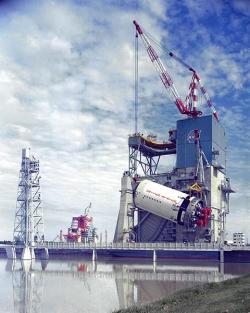
YearAdded:
Image Credit: Courtesy ASMEImage Caption: Saturn V Rocket being lifted onto the A-2 Test Stand at NASA's John C. Stennis Space CenterEra_date_from: 1964
1993
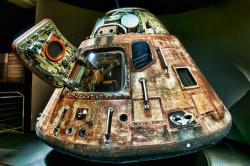
6225 Vectorspace BlvdTitusvilleState: FLZip: 32780Country: USAWebsite: http://www.asme.org/about-asme/history/landmarks/topics-a-l/air-and-space-transportation/-162-apollo-space-command-module-%281968%29, http://nssdc.gsfc.nasa.gov/planetary/lunar/apollo14info.htmlCreator: North American Aviation
The Apollo was the vehicle that first transported humans to the moon and safely back to earth. Nine lunar flights were made between 1968 and 1972. The command module, built by North American Aviation (at the time of launch, North American Rockwell Corporation), accommodated three astronauts during the mission. It was the only portion of the Apollo spacecraft system designed to withstand the intense heat of atmospheric re-entry at 25,000 mph and complete the mission intact. This command module at Rockwell flew as Apollo 14 in 1971.
YearAdded:
Image Credit: Courtesy Flickr/Chad Nordstrom (CC BY 2.0) Image Caption: The real Apollo Space Command Module on display at the Kennedy Space Center's Saturn V Building.Era_date_from: 1968
1992
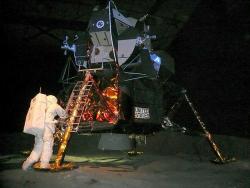
The Apollo lunar module (LM-13) was developed by the Grumman Aircraft Engineering Corp. (now Northrop Grumman). The LM's main functions were to carry two astronauts from lunar orbit to the moon's surface, and then return them to lunar orbit to rendezvous and dock with the Apollo command-service modules. On the surface, the LM served as a shelter and base of operations as the astronauts carried out their exploration and experiments. On July 20, 1969, the LM "Eagle" touched down on the moon, becoming the first piloted spacecraft to land on a celestial body other than Earth.
YearAdded:
Image Credit: Courtesy Flickr/Michael Gray (CC BY-SA 2.0) Image Caption: The Apollo Lunar Module LM-13 on display in the Cradle of Aviation Museum Era_date_from: 1972
2002
Innovations
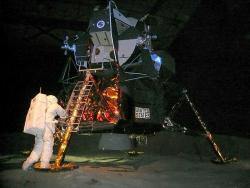
The Apollo lunar module (LM-13) was developed by the Grumman Aircraft Engineering Corp. (now Northrop Grumman). The LM's main functions were to carry two astronauts from lunar orbit to the moon's surface, and then return them to lunar orbit to rendezvous and dock with the Apollo command-service… Read More
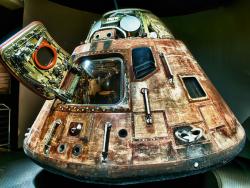
The Apollo was the vehicle that first transported humans to the moon and safely back to earth. Nine lunar flights were made between 1968 and 1972. The command module, built by North American Aviation (at the time of launch, North American Rockwell Corporation), accommodated three astronauts during… Read More
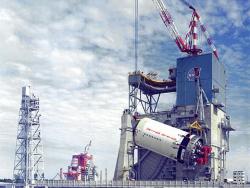
The Advanced Engine Test Facility was built in 1964, three years after President John F. Kennedy committed the United States to world leadership in aeronautical science. Conceived and designed by Wernher von Braun, the first director of the Marshall Space Flight Center, this facility was used to… Read More


